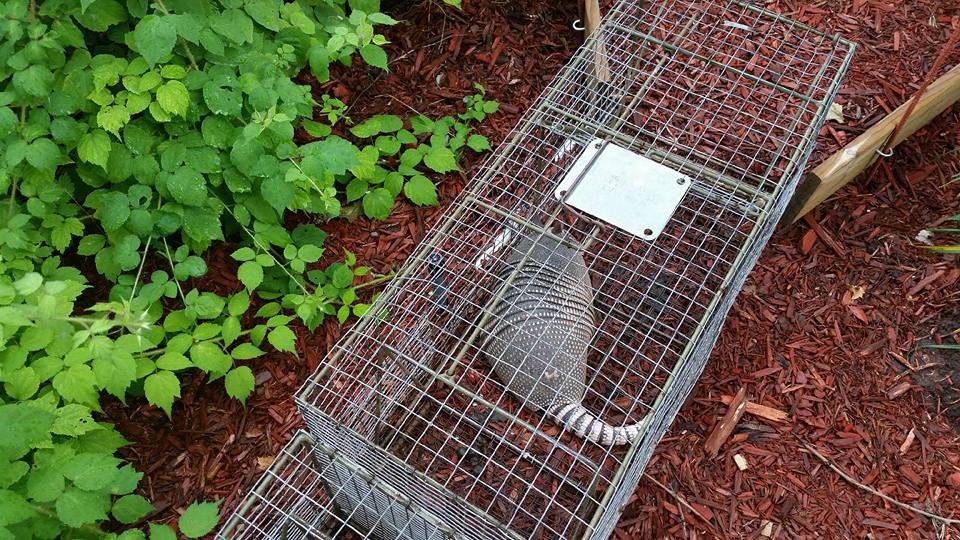If you need armadillos removed, hire the professionals at Meneely Wildlife Control. Armadillos are not native to Kansas or Oklahoma, they originally came from central and South America but have expanded their range dramatically since arriving here. Over the last century, the armadillo has moved northward, farther into the United States where it has proven to be a very destructive animal with few predators. There are no effective repellents and the best way to get rid of them is by trapping and removing them. We offer affordable armadillo removal at a fair price and can help you not only get rid of your armadillo problems and in many cases, with habitat modifications we can prevent them from re-occurring and being a problem to your lawn and garden guaranteed.
Video: Checking Armadillo Traps in flower beds.
Description of Armadillos:
Of the approximately 20 species that exist, only the nine-banded armadillo is found in the United States. The word “armadillo” means “little-armored one,” and refers to the presence of bony, armor-like plates covering their body. Despite the name, the nine-banded armadillo can have 7 to 11 bands on its armor. There is a common misconception that the nine-banded armadillo can roll up into spherical balls. However, only two species of armadillo (both three-banded) roll up completely.
Size:
Nine-banded armadillos are about 2.5 feet long from the nose to the tip of the tail and weigh an average of 12 pounds.
Diet:
Armadillos are generalist feeders and use their sense of smell to track down food; mostly insects and invertebrates. A lesser part of the diet is comprised of small reptiles, amphibians, and mammals. Also, armadillos will occasionally consume reptile and bird eggs. Less than 10 percent of the diet is from fruit, seeds, fungi, and other plant matter.
Typical Lifespan:
The nine-banded armadillo typically lives from 7 to 20 years in the wild. The female gives birth to four identical offspring. Once the egg is fertilized after mating, the embryo splits twice so all four young are genetic copies of one another.
Habitat:
They prefer warm, wet climates and live in forested or grassland habitats. Small streams are no obstacle for these amazing animals! The nine-banded can hold its breath for up to six minutes and can swim or “walk” along the bottom of rivers. Armadillo burrows are often used by other animals, like snakes, rabbits, opossums, rats, raccoons and skunks.
Range:
Since migrating to the southeastern area of United States, armadillos have been expanding their range northward for some time. Armadillos have even been spotted as far north as Illinois and Nebraska! Armadillos have not yet reached the full extent of their possible range.
If you need armadillo removal problem in Wichita, KS and would like a Meneely Wildlife Control technician to provide expert wildlife removal services for you, please contact Meneely Wildlife Control by calling
(580) 761-6526 in Wichita, Andover, Rose Hill, Derby, Haysville, Schulte, Goddard, Clearwater, Mulvane, Udall, Wellington, Oxford, El Dorado and other Kansas locations. We solve armadillo problems in lawns & gardens by trapping and removing armadillos.
When you need armadillos removed in Ponca City OK, Newkirk, Blackwell, Bartlesville, Stillwater, Enid, Pond Creek, Deer Creek, Lamont, Medford, Kaw City, Shidler, Fairfax and all other Oklahoma locations, pick up the phone and call Meneely Wildlife Control at
580-761-6526.
